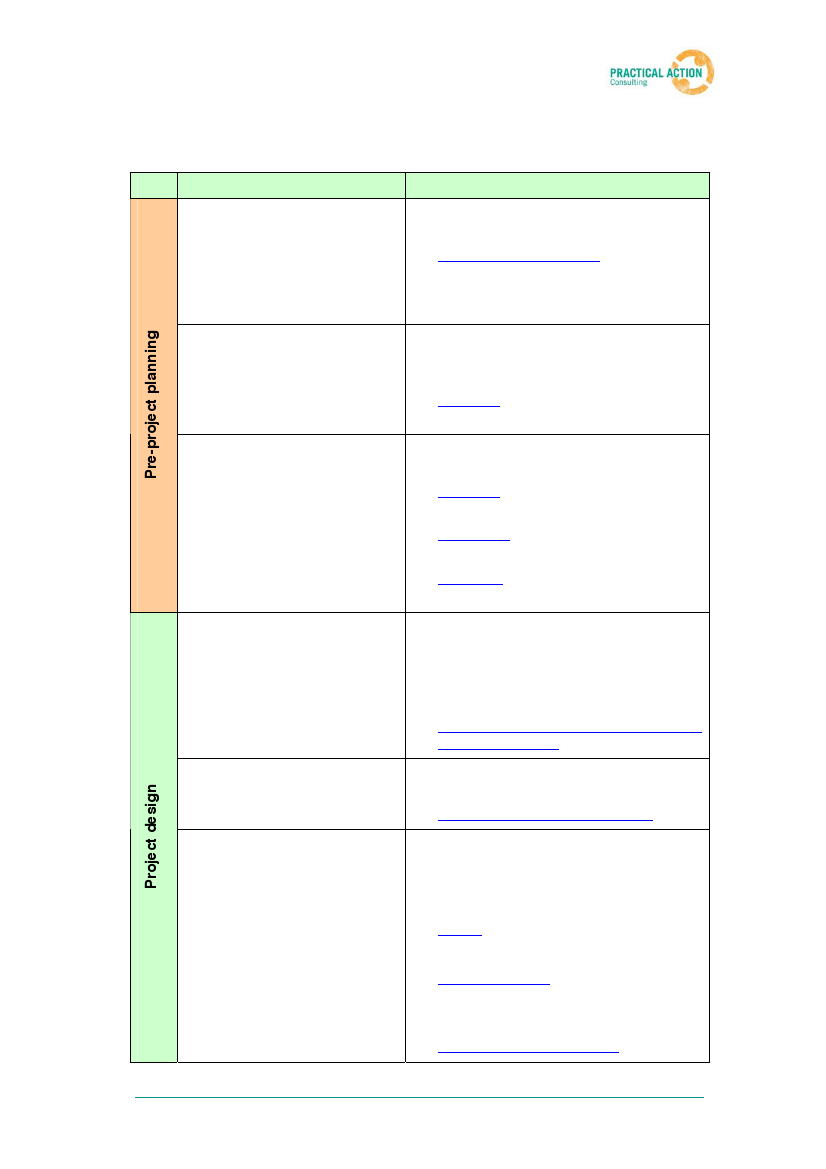
Annex 1: A project planning framework
Project activities
Beneficiary assessment
Energy resource availability
assessment
Technology assessment
Designing an operating modality
Designing end-user finance
mechanisms
Project planning
Comment / tools
Identifying the energy needs and financial
resources of the beneficiaries
• Rapid appraisal methods (Key informant
interview. Focus group discussion.
Community group interview. Mini-survey)61
62
Identification of all the potential RE resources
and organizational/institutional capacity in the
area:
• E-mindset energy planning tool.
Renewable Energy Resource Assessment.
Identifying appropriate RETS that can match
the beneficiaries needs and local resources
• E-mindset energy planning tool. Matching
Energy Supply and Demand.
• RETScreen clean energy project analysis
software
• RE-Toolkit to design and improve RE
projects
Identifying the most suitable operating model
and partners: Understand the different
modalities; assess capacity of organisation
and partners to complete activities; identify
objectives of the project.
• Different Business Models for Providing
Finance to End-Users41
Identifying the most suitable end-user financial
disbursement scheme
• End-user finance strategy checklist41
Design of specific project activities. Determine
roles and responsibilities of project
stakeholders.
• Work plan
• Budget 63 64
• Gantt charts
• Logical framework 61
• Participatory Monitoring and Evaluation
tool (Chapter 4)
• Gender mainstreaming toolkit60
Renewable Energy to Reduce Poverty in Africa
40